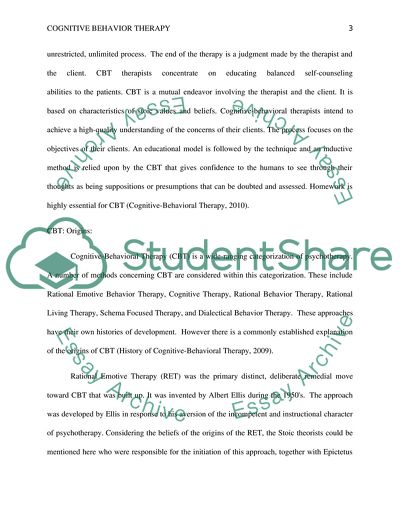Cite this document
(Cognitive Behavioral Therapy Essay Example | Topics and Well Written Essays - 1500 words - 1, n.d.)
Cognitive Behavioral Therapy Essay Example | Topics and Well Written Essays - 1500 words - 1. https://studentshare.org/psychology/1799036-cognitive-behavior-therapy-origins-and-current-applications
Cognitive Behavioral Therapy Essay Example | Topics and Well Written Essays - 1500 words - 1. https://studentshare.org/psychology/1799036-cognitive-behavior-therapy-origins-and-current-applications
(Cognitive Behavioral Therapy Essay Example | Topics and Well Written Essays - 1500 Words - 1)
Cognitive Behavioral Therapy Essay Example | Topics and Well Written Essays - 1500 Words - 1. https://studentshare.org/psychology/1799036-cognitive-behavior-therapy-origins-and-current-applications.
Cognitive Behavioral Therapy Essay Example | Topics and Well Written Essays - 1500 Words - 1. https://studentshare.org/psychology/1799036-cognitive-behavior-therapy-origins-and-current-applications.
“Cognitive Behavioral Therapy Essay Example | Topics and Well Written Essays - 1500 Words - 1”. https://studentshare.org/psychology/1799036-cognitive-behavior-therapy-origins-and-current-applications.


